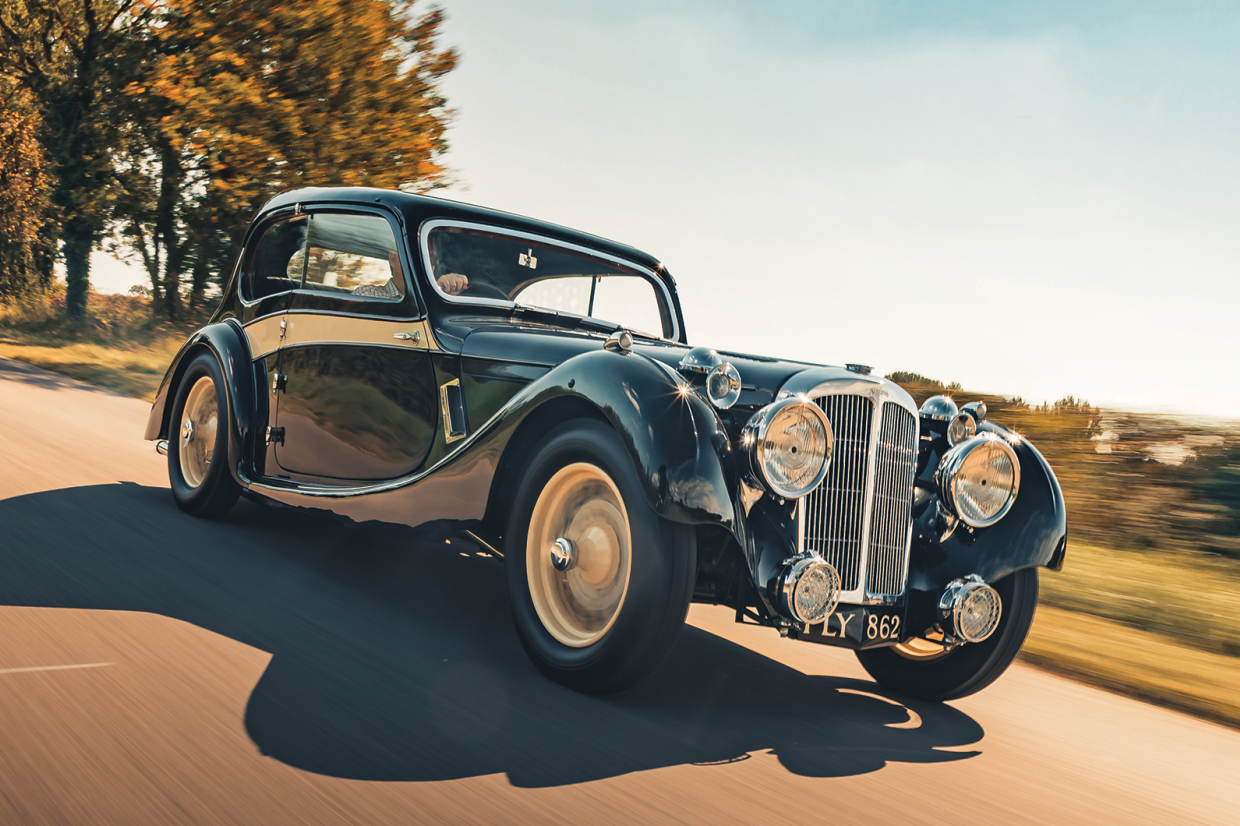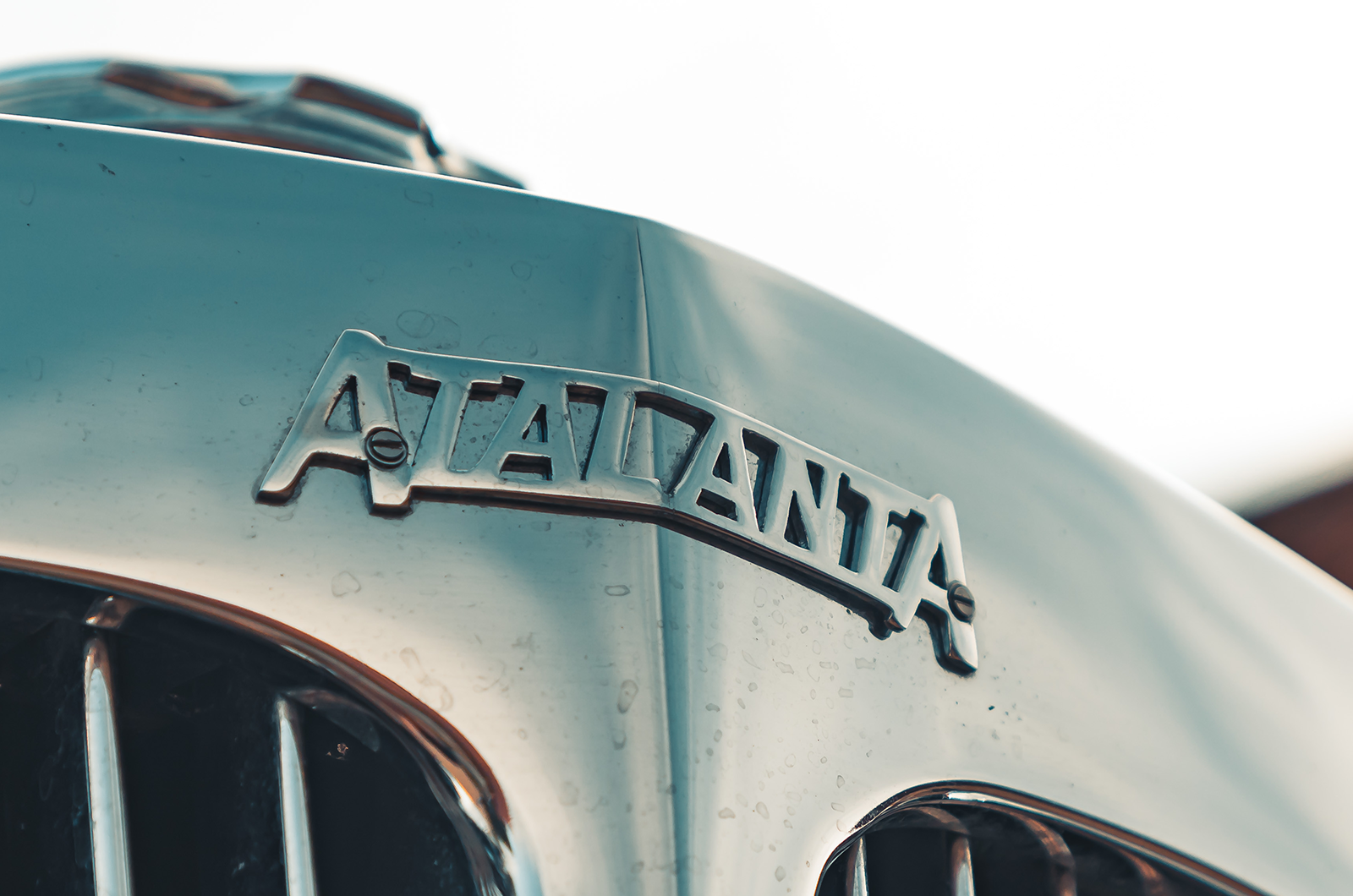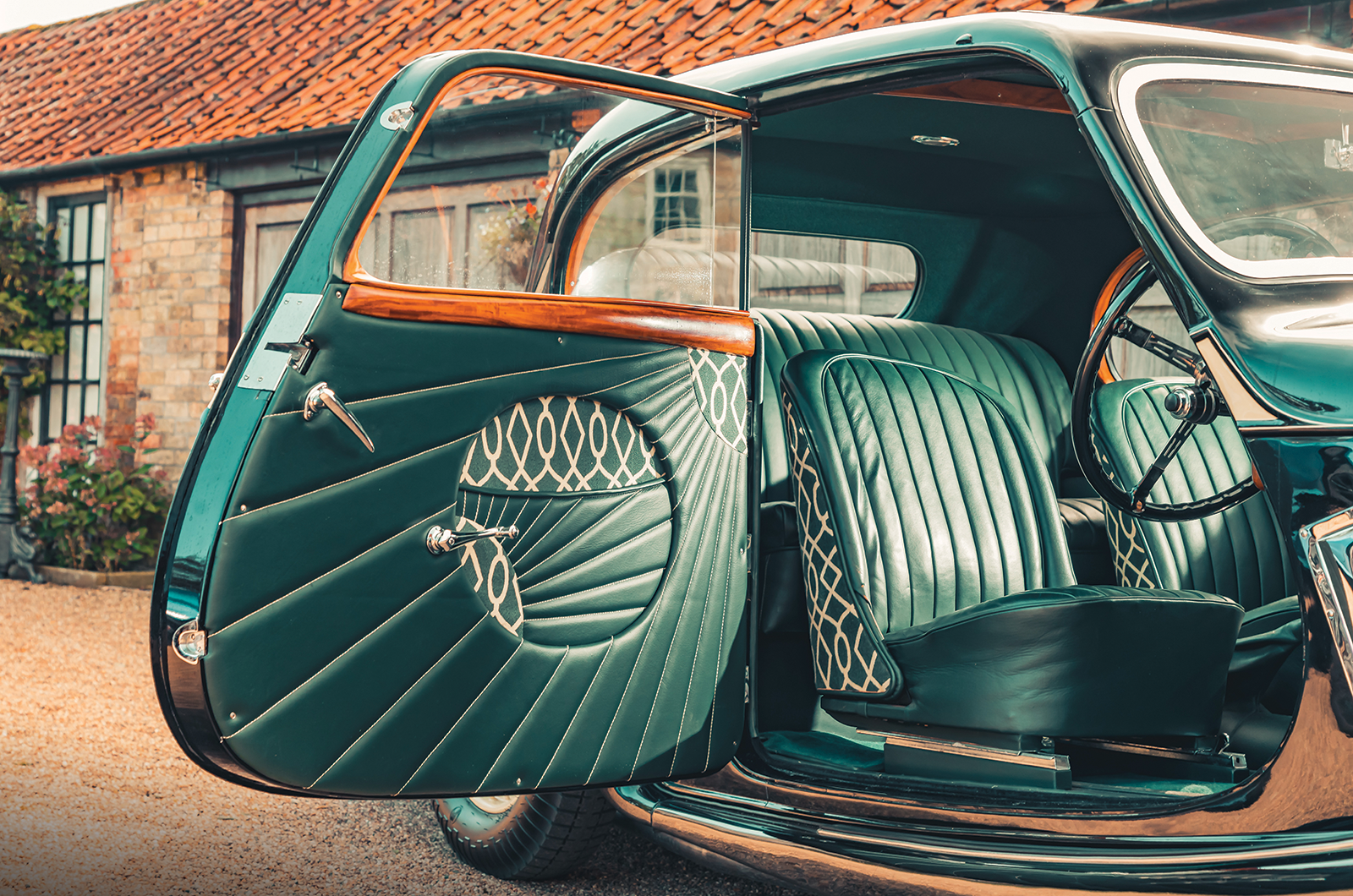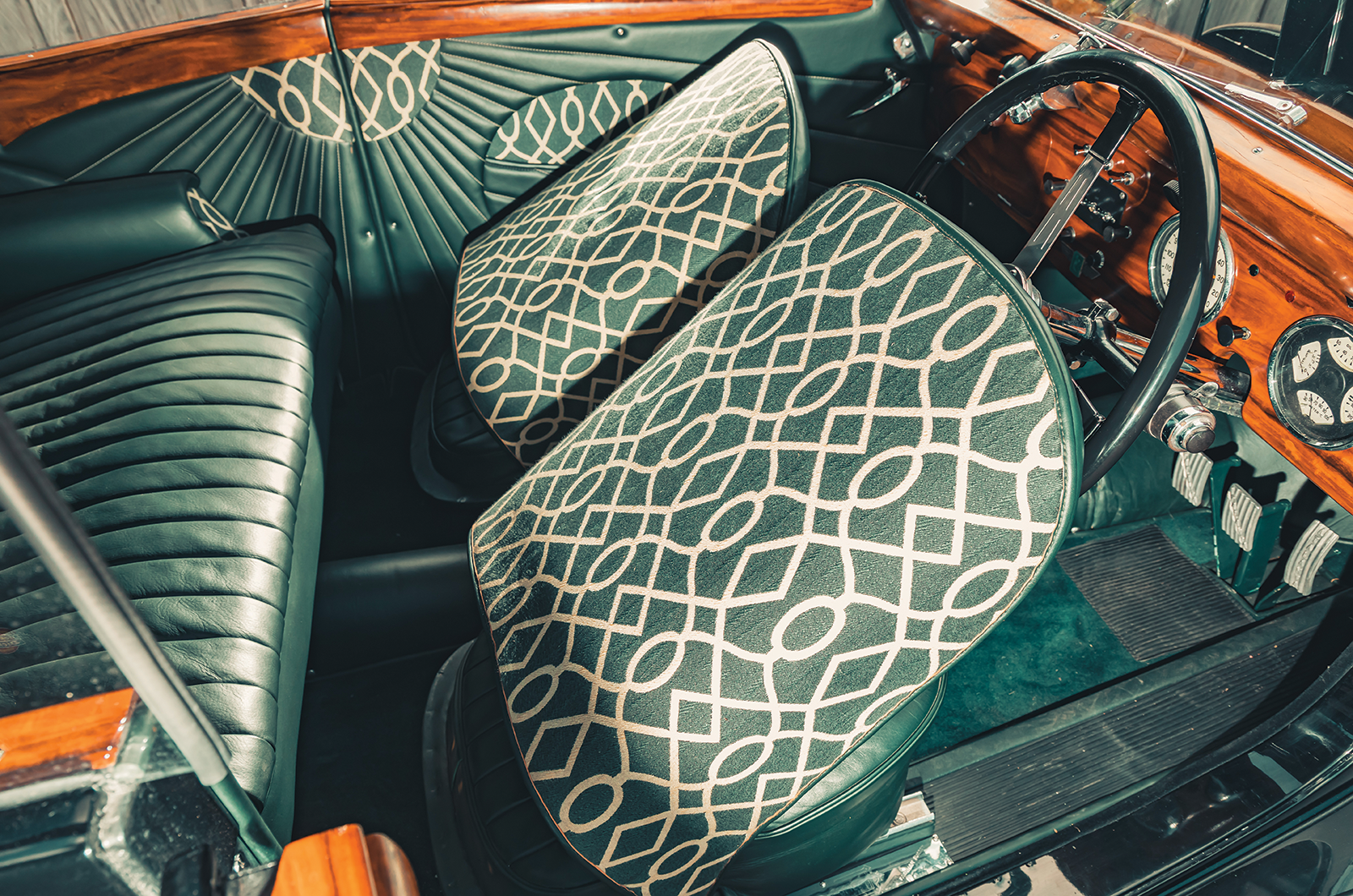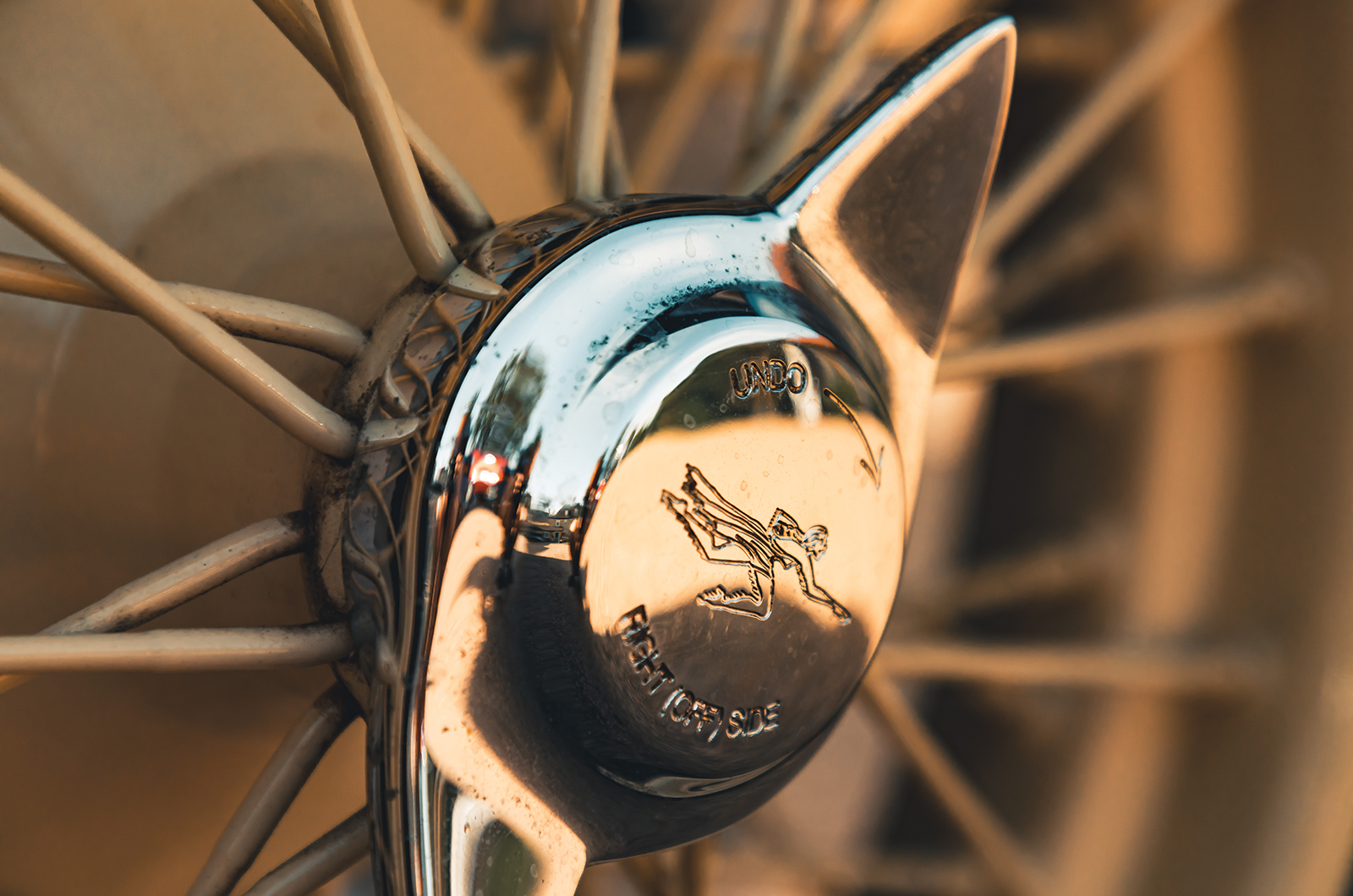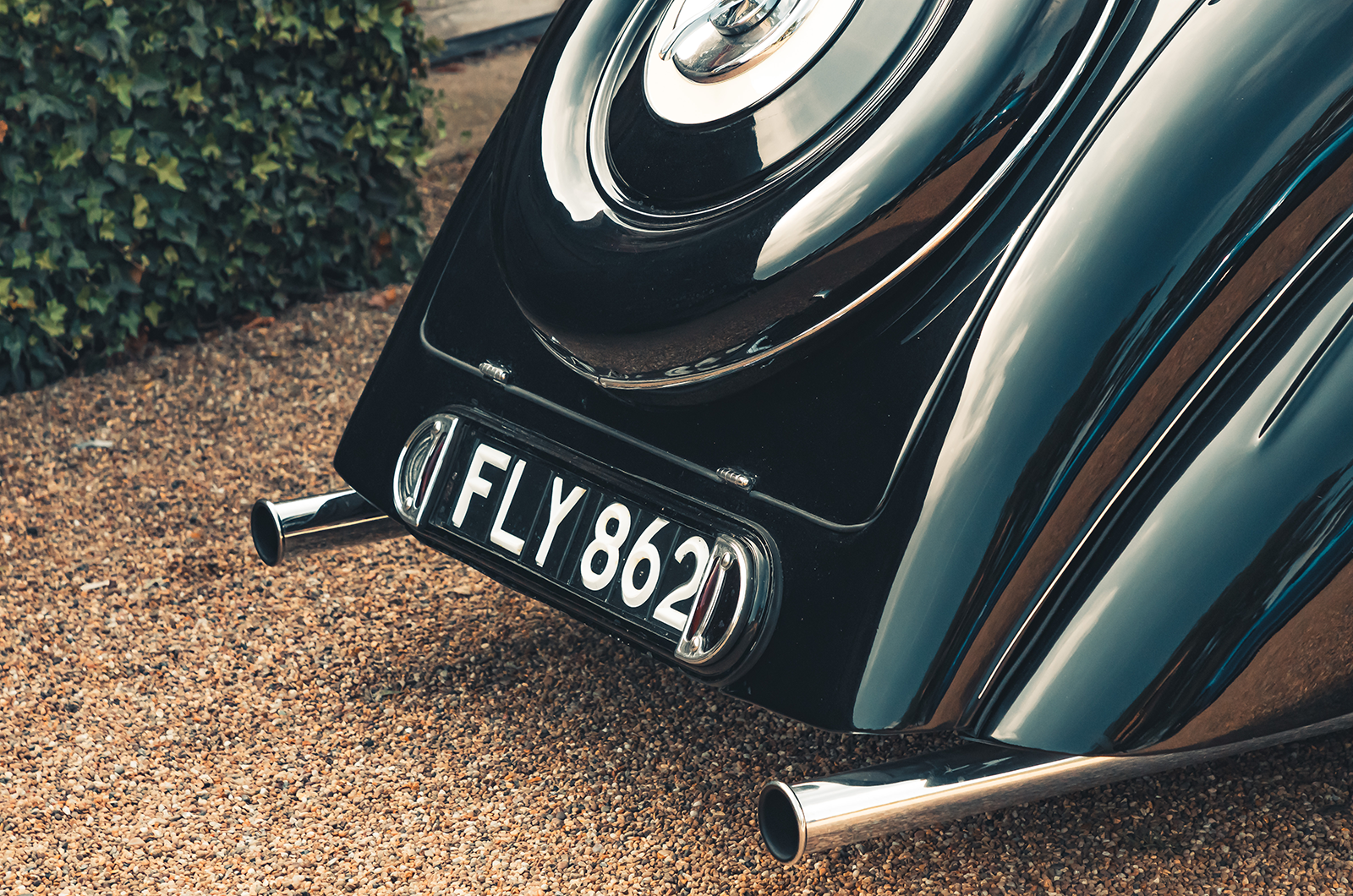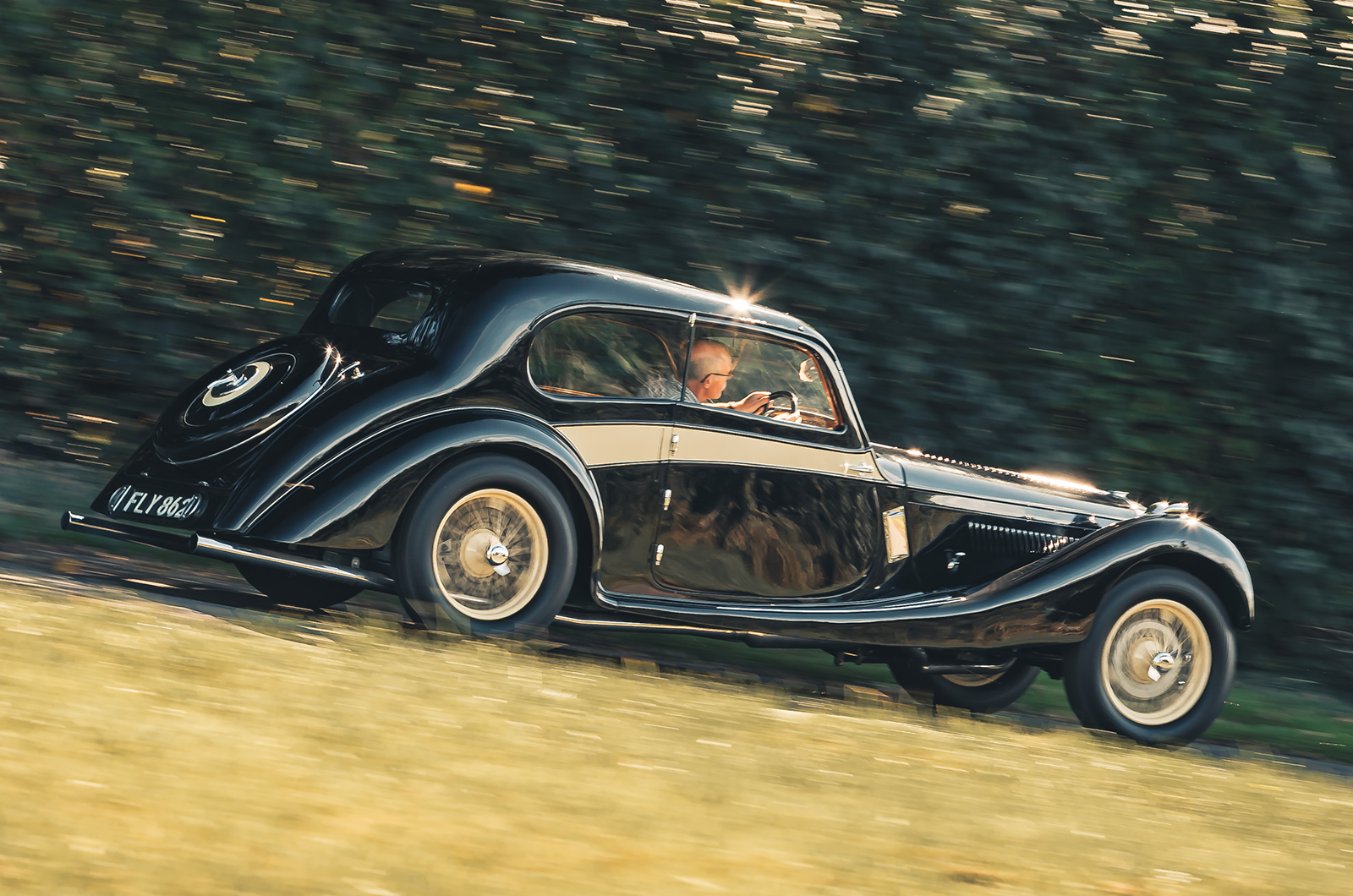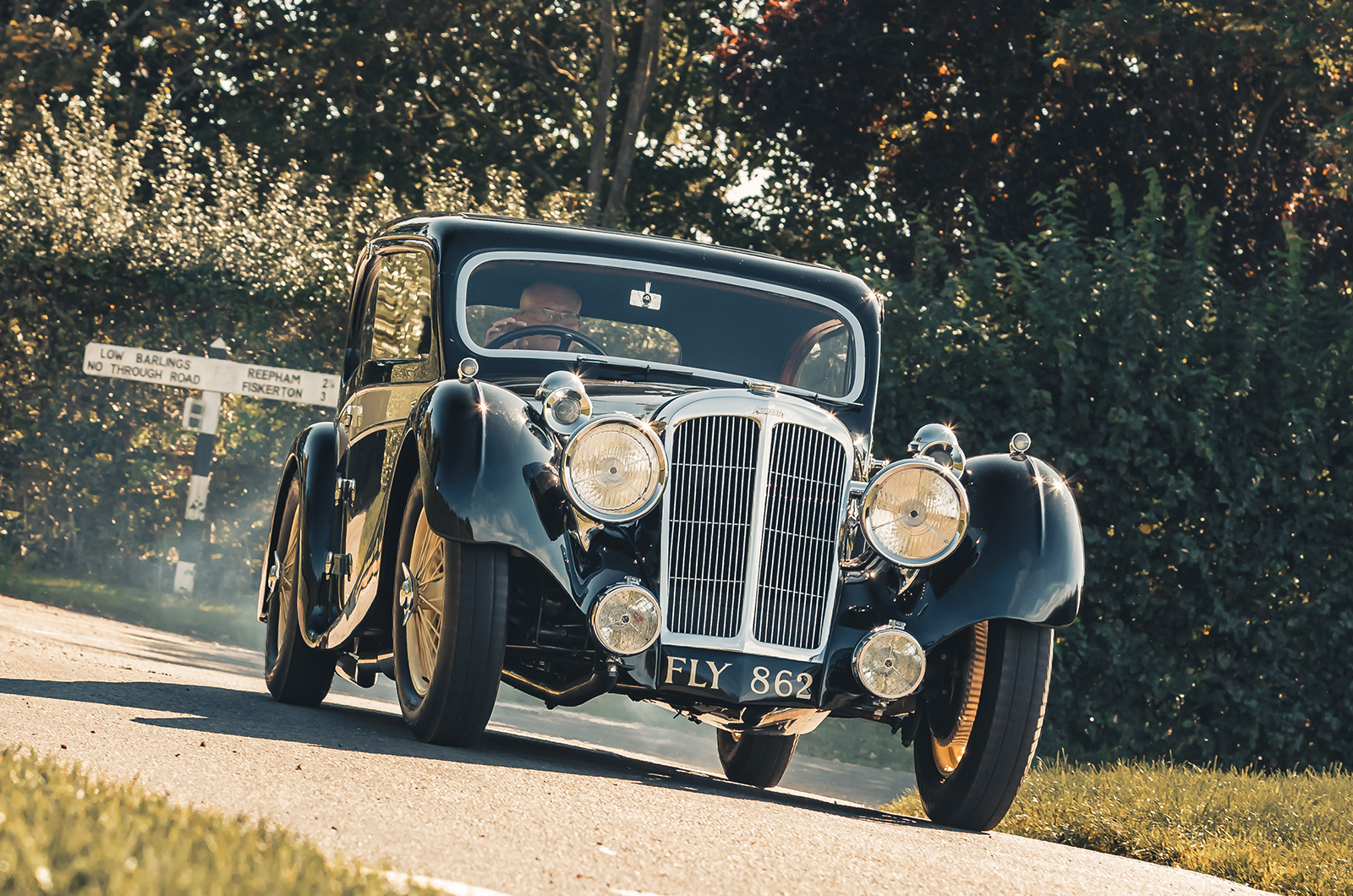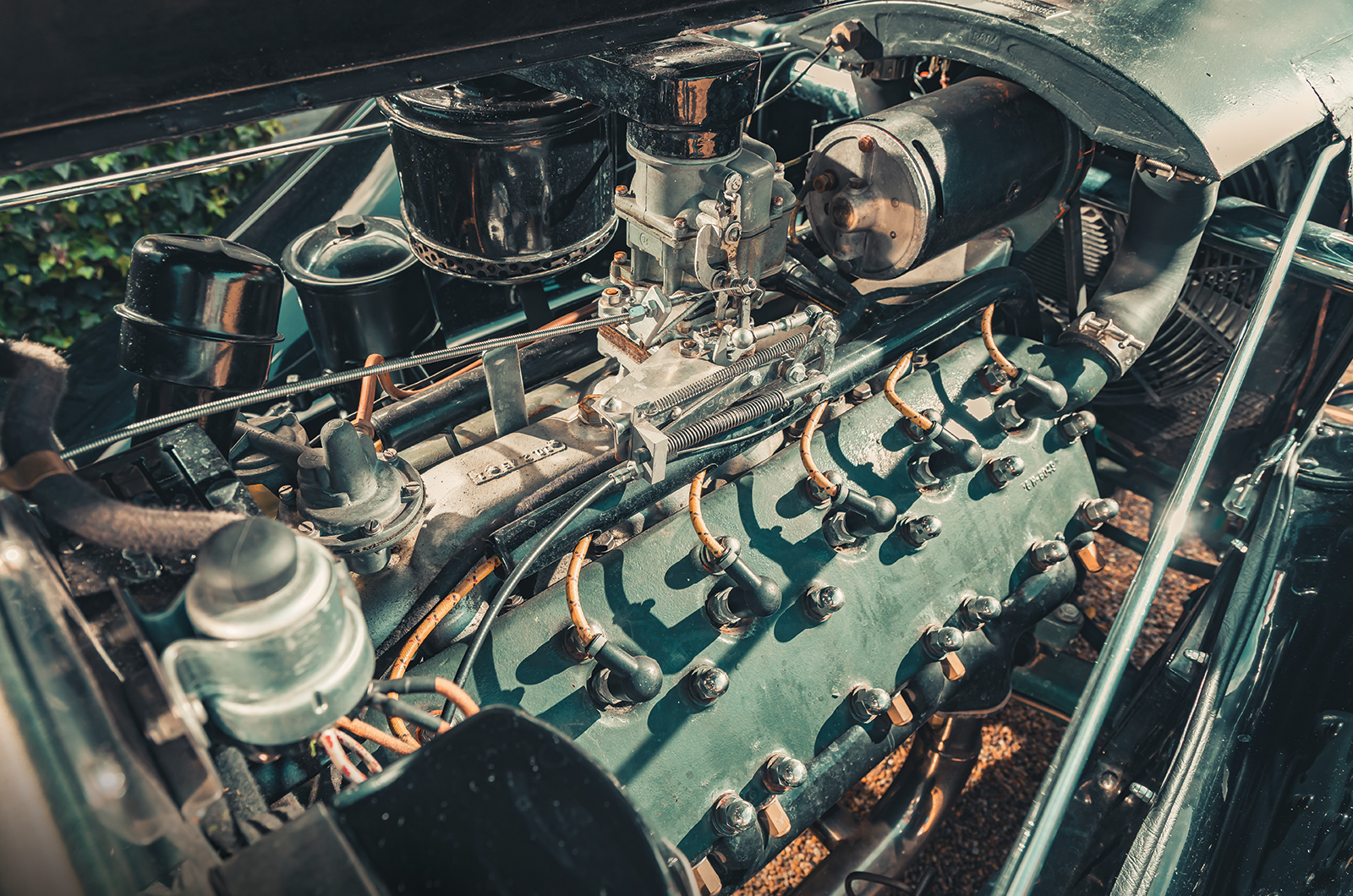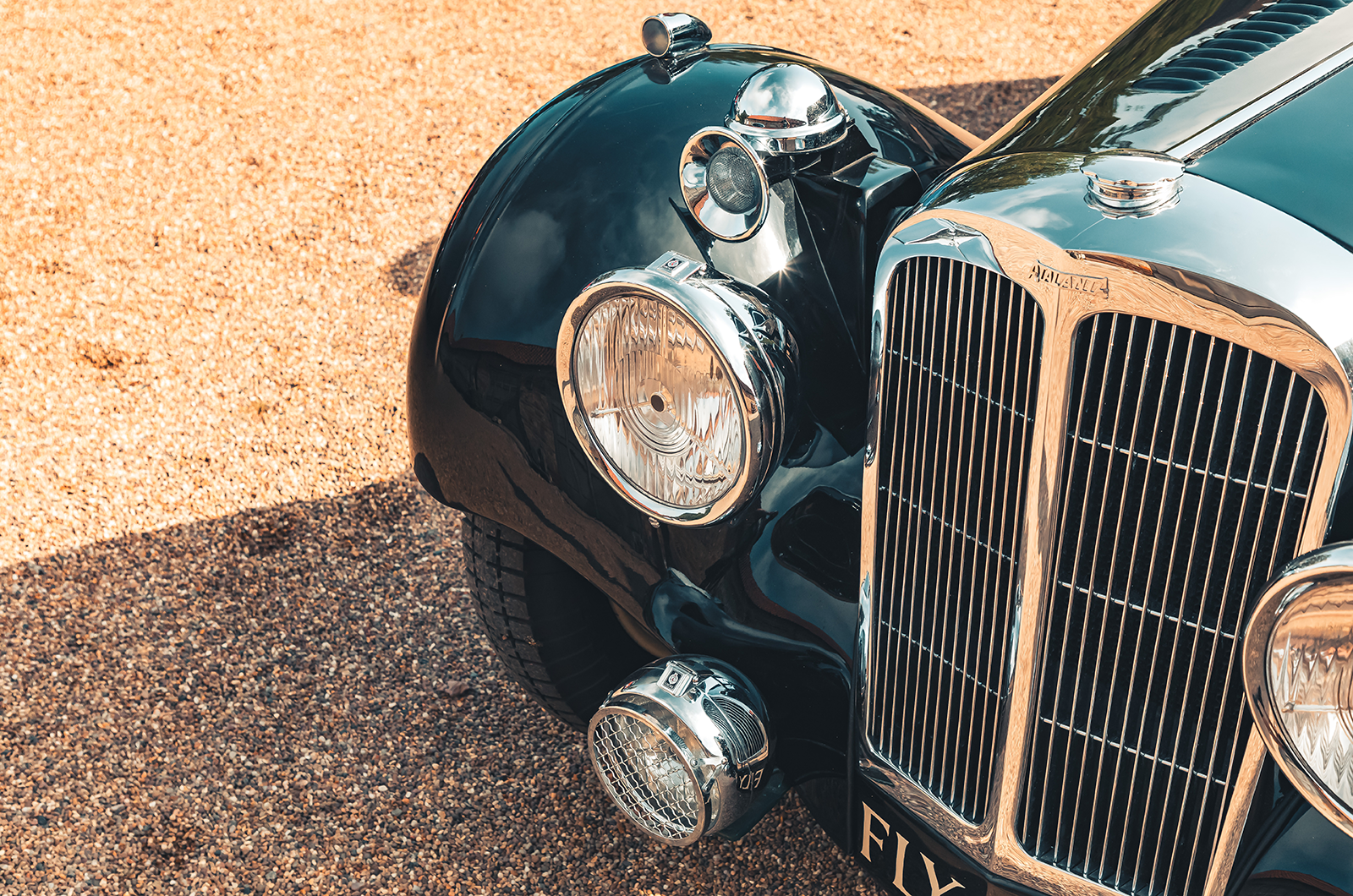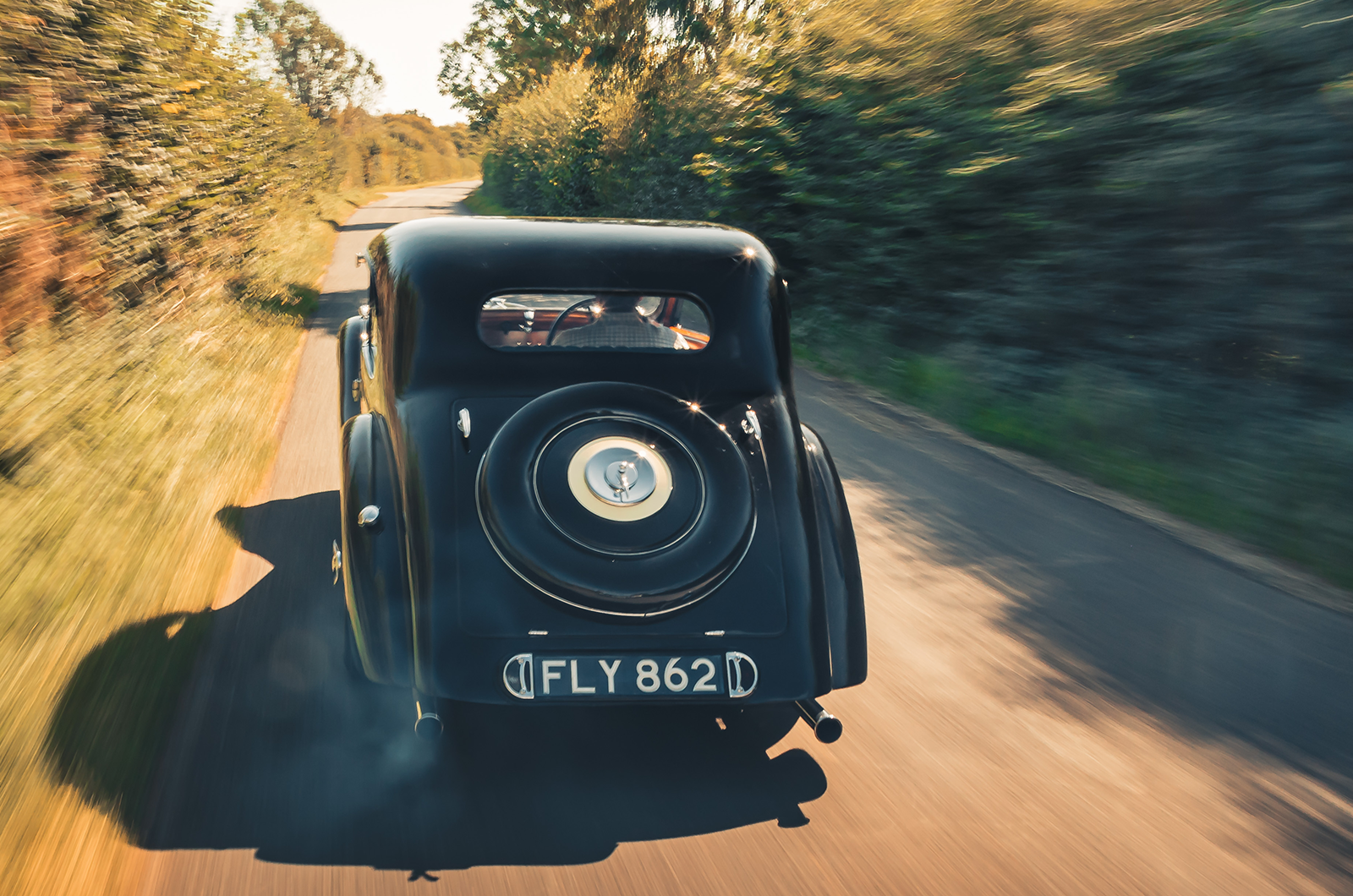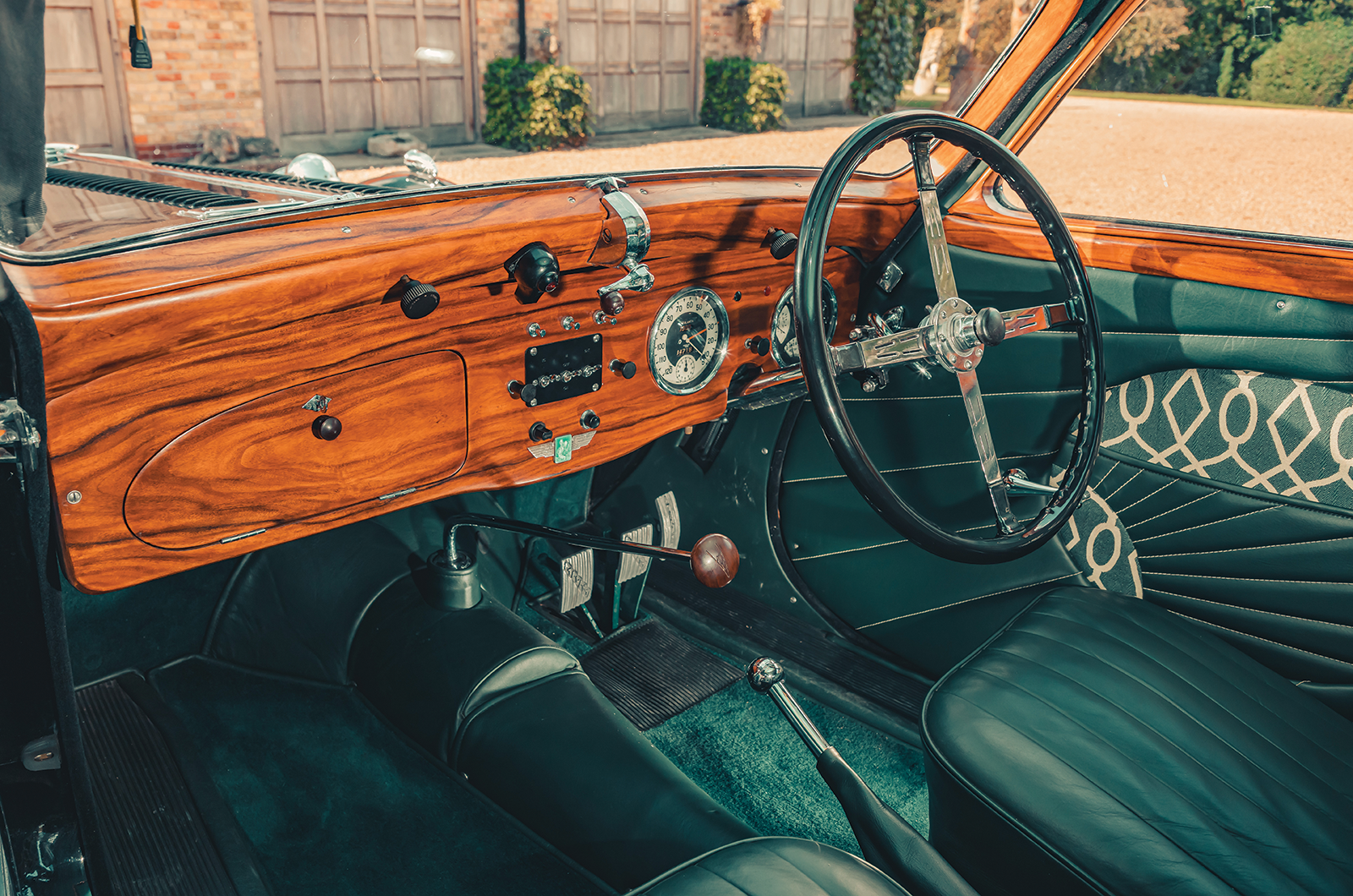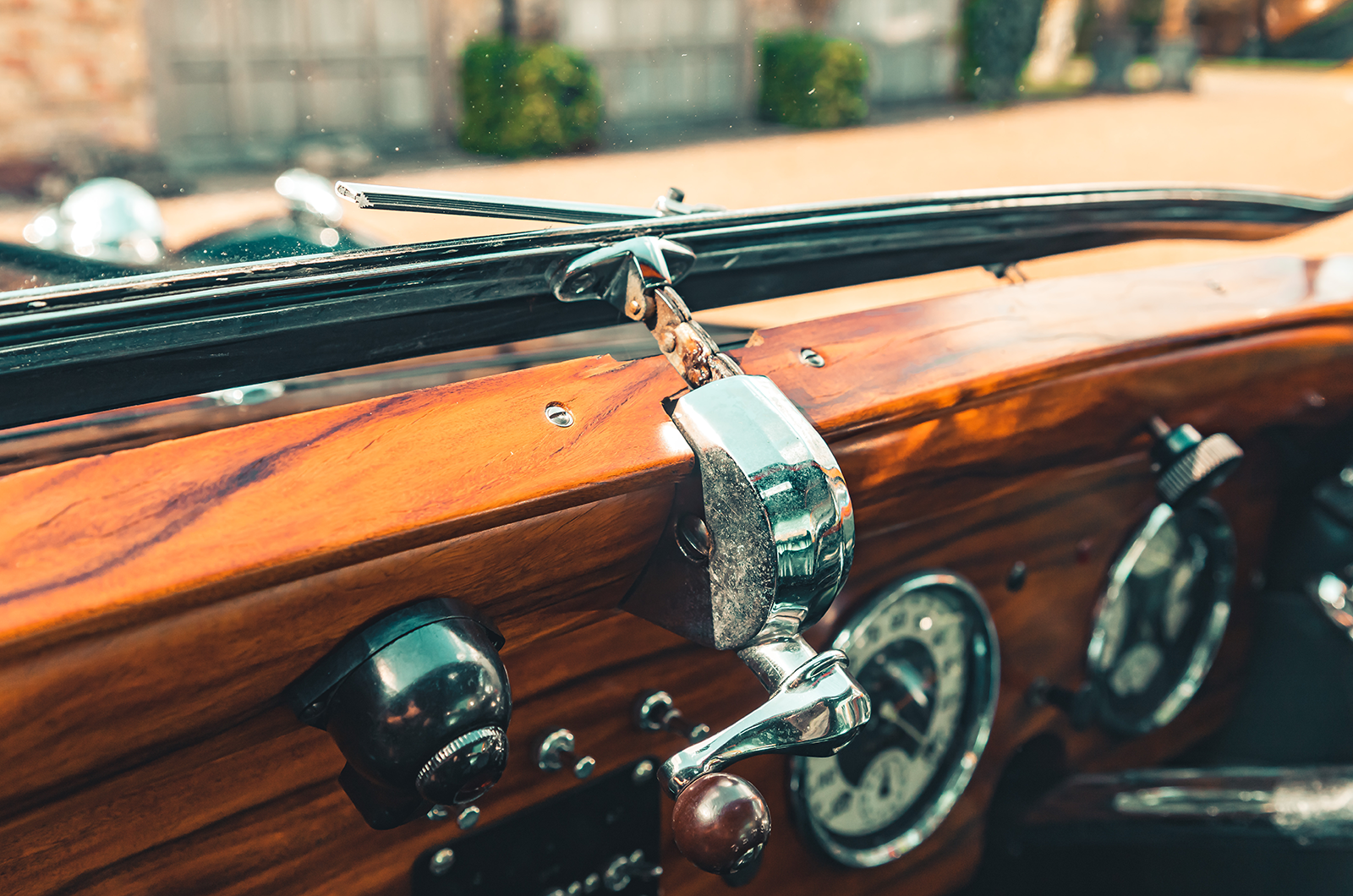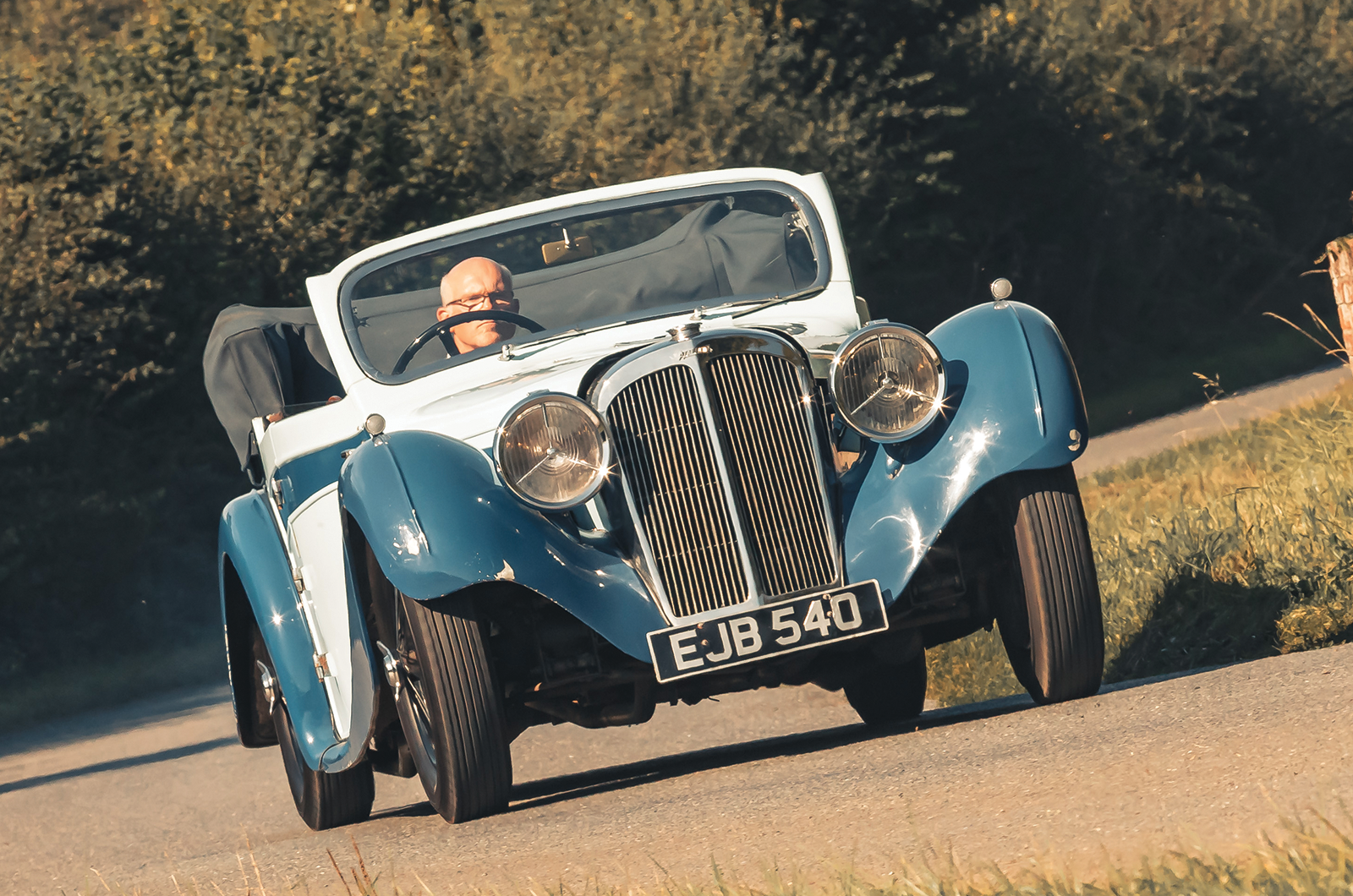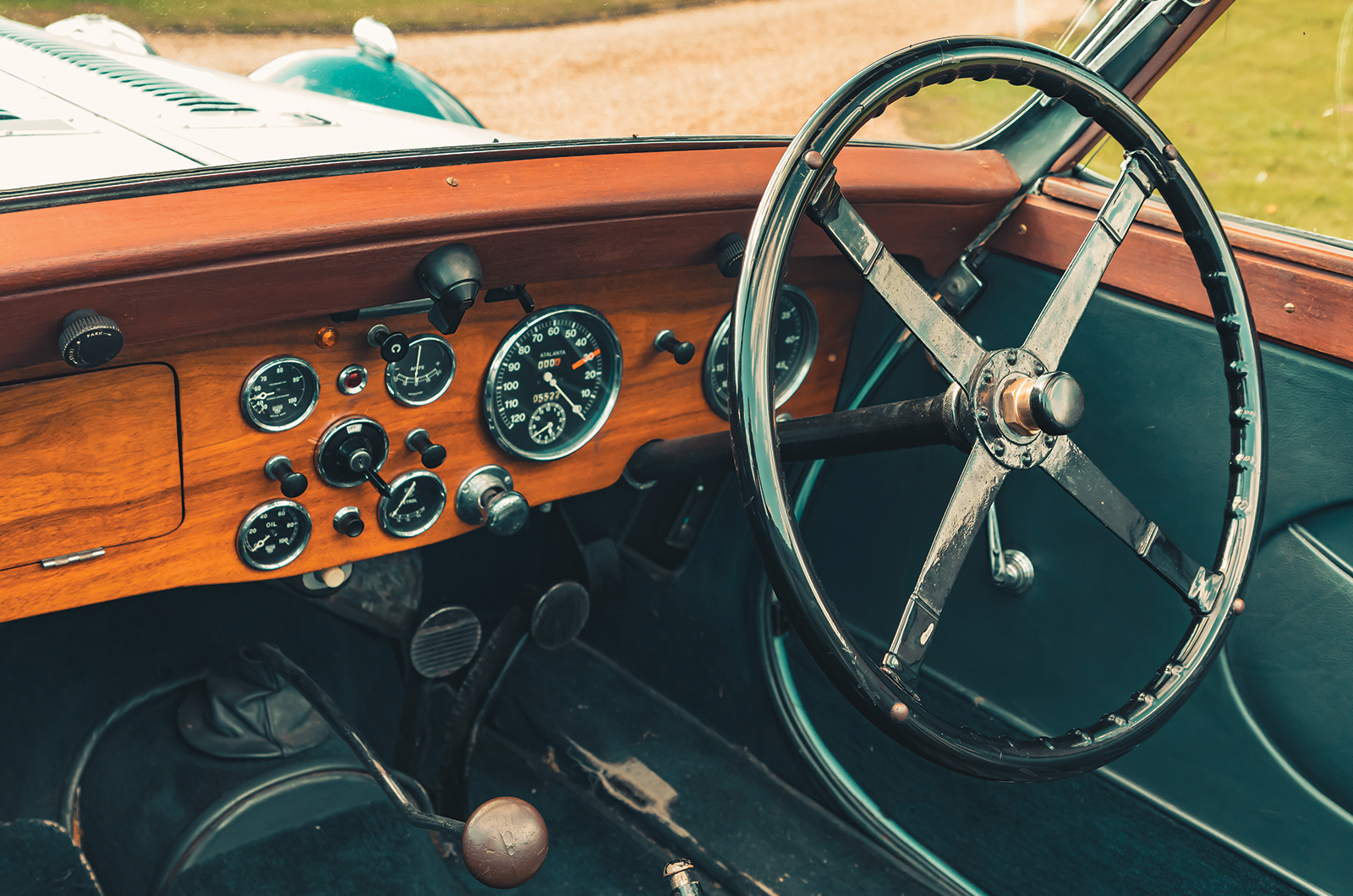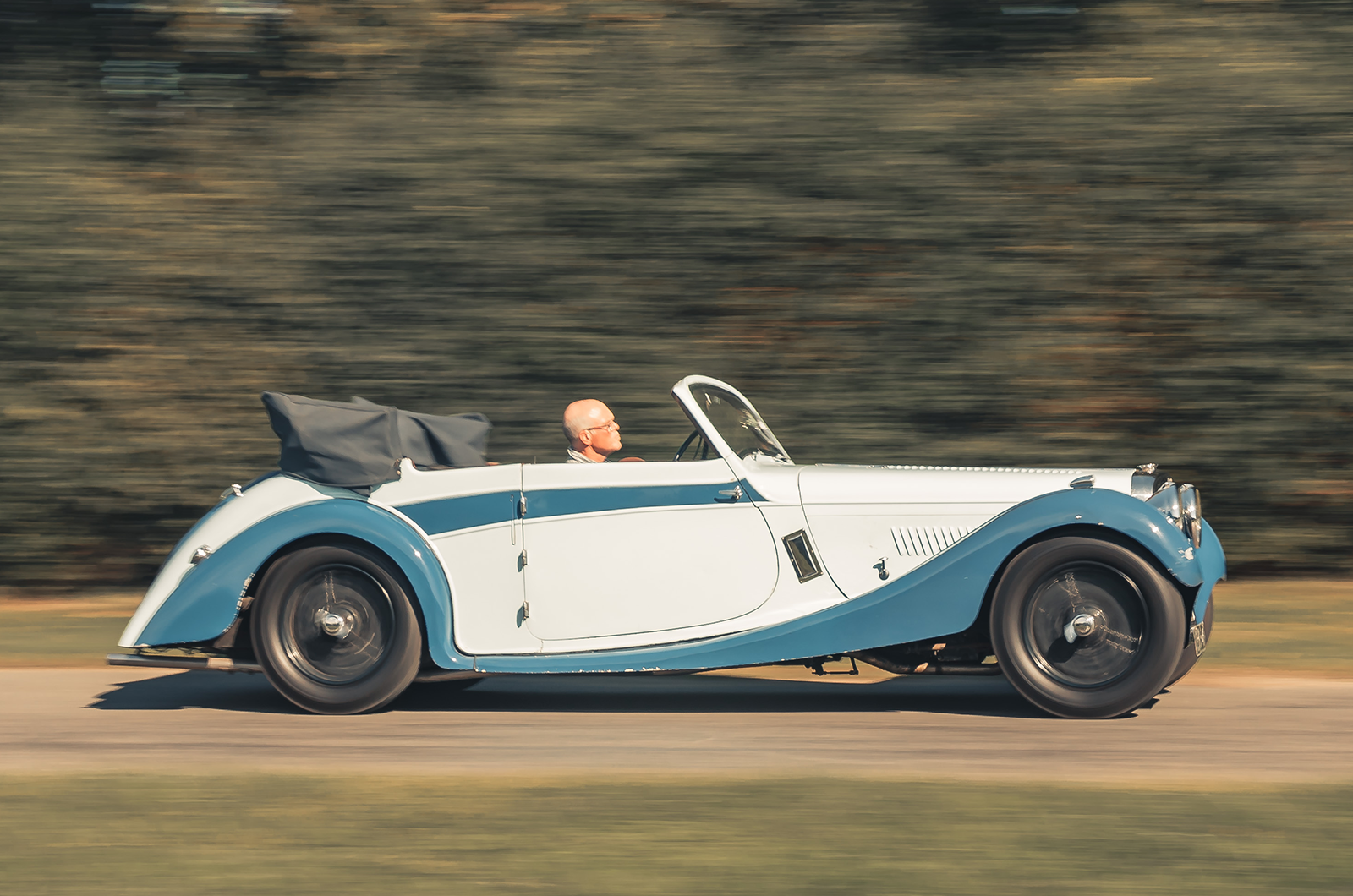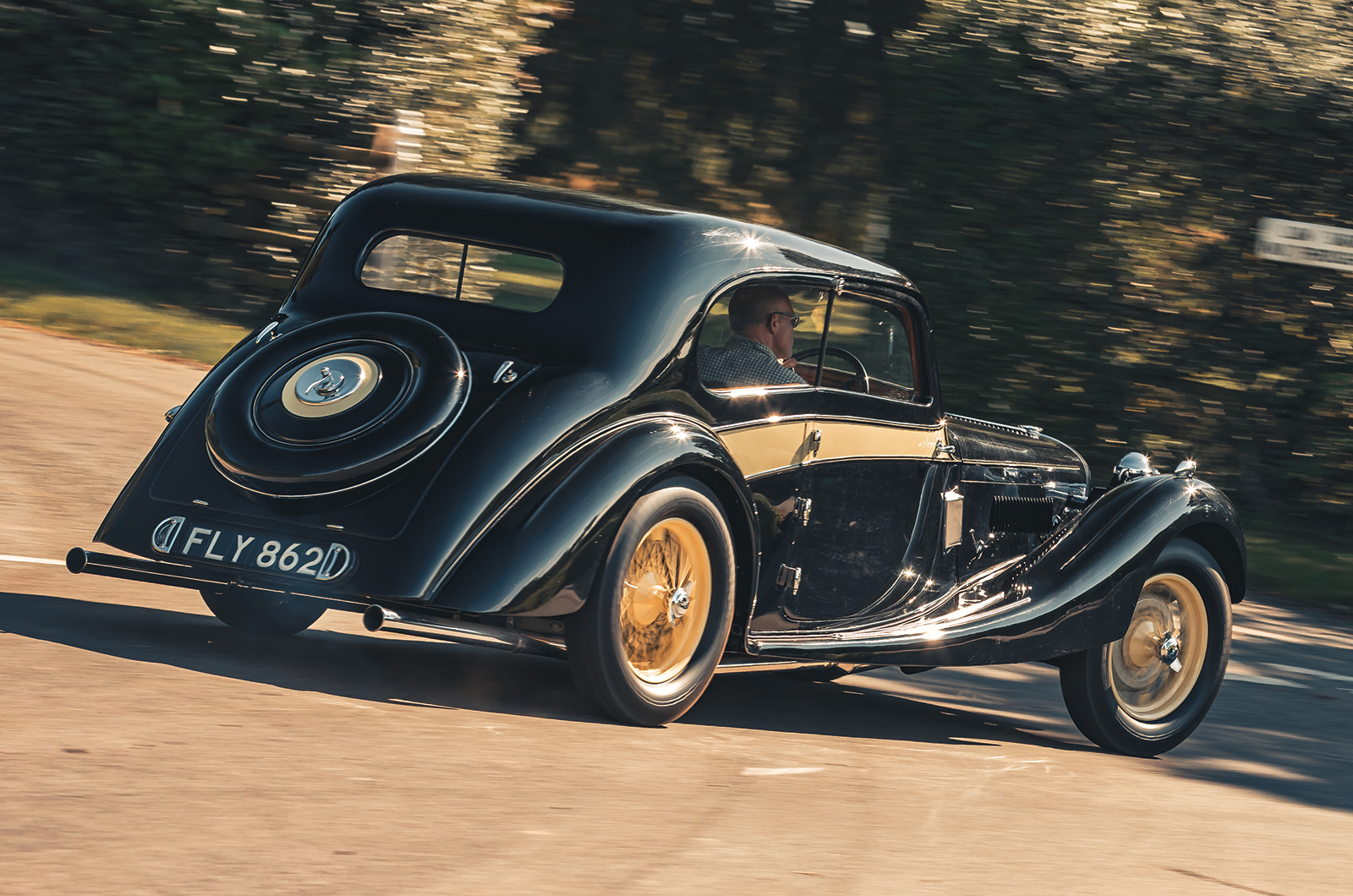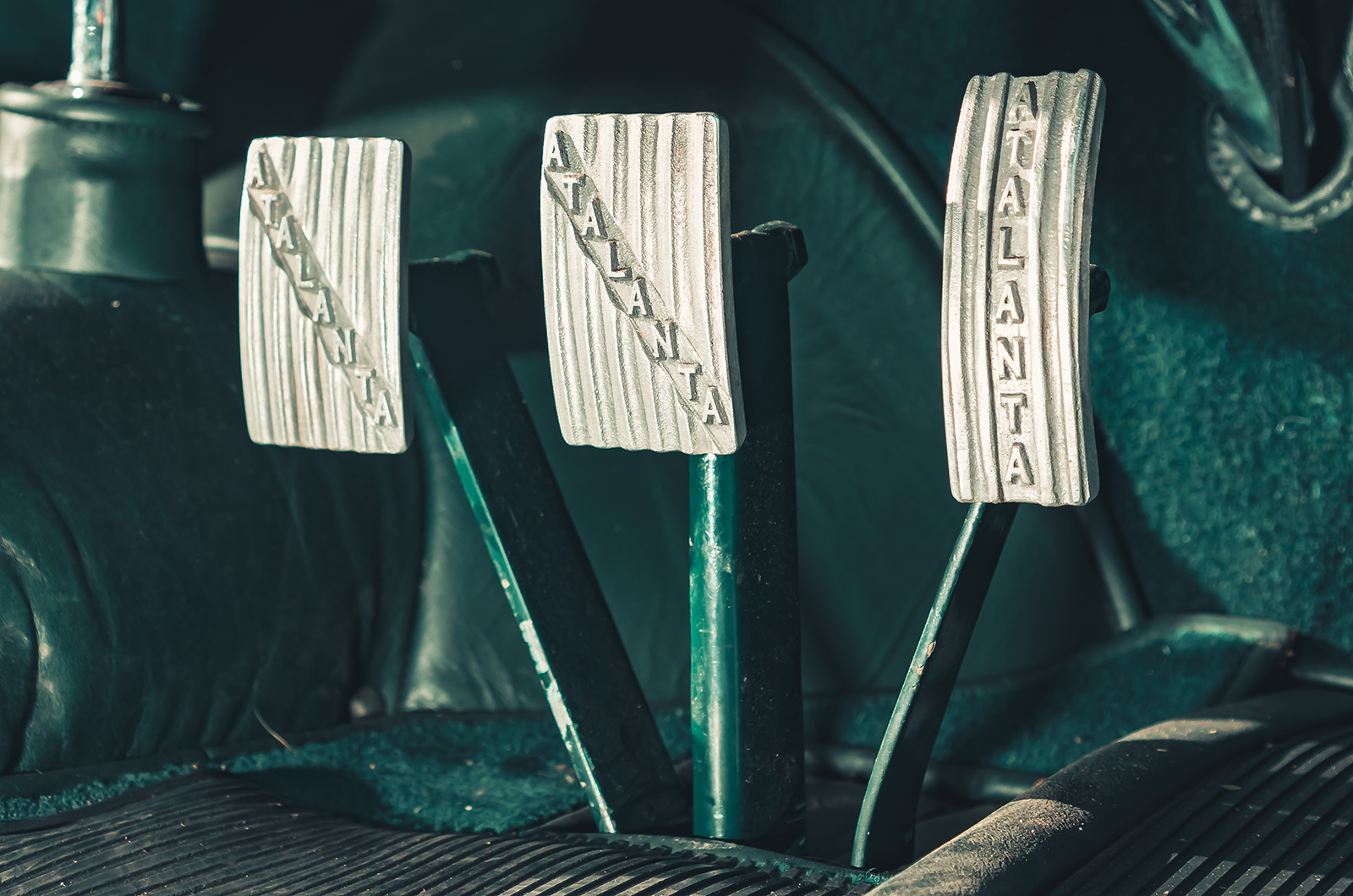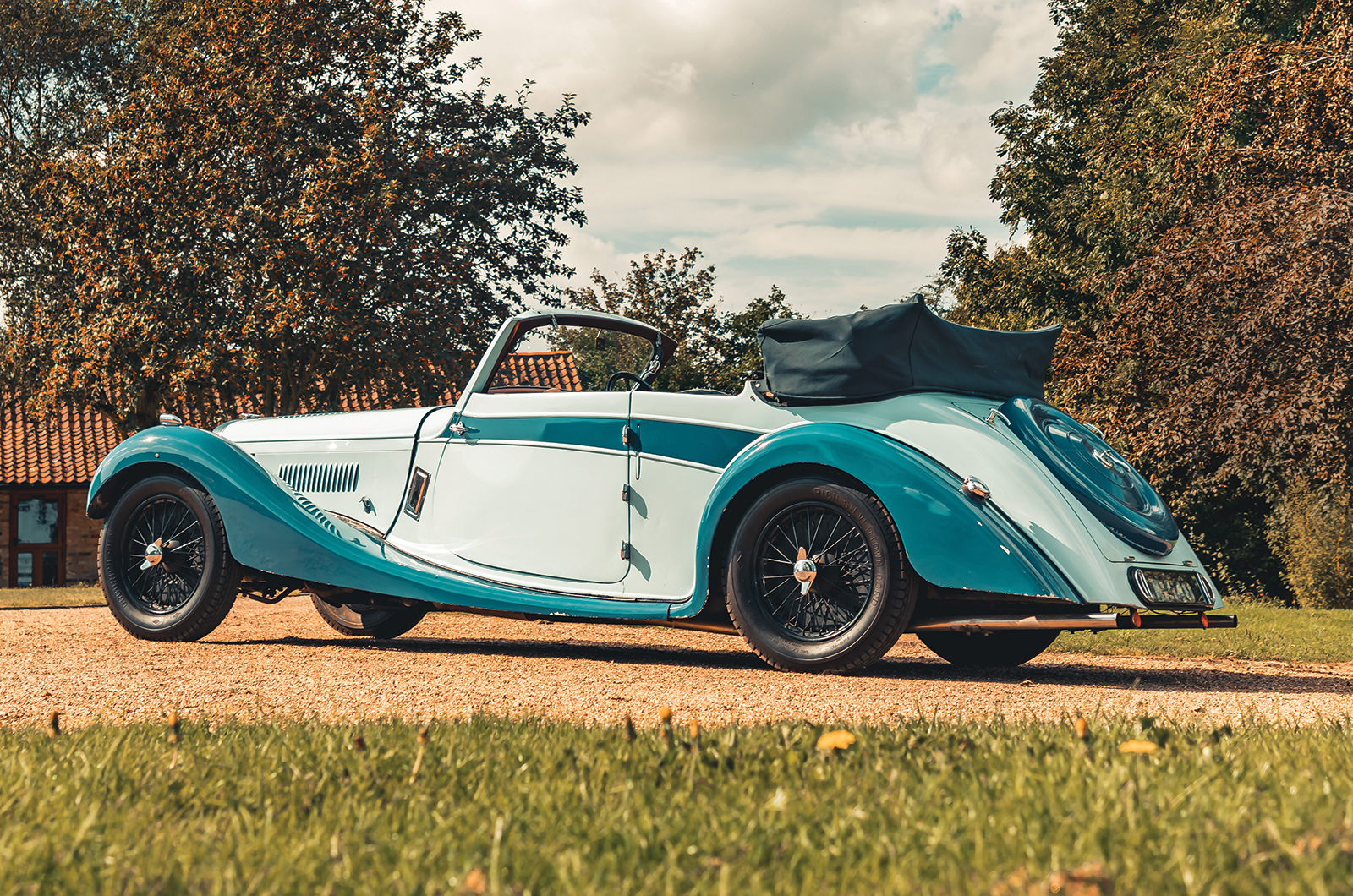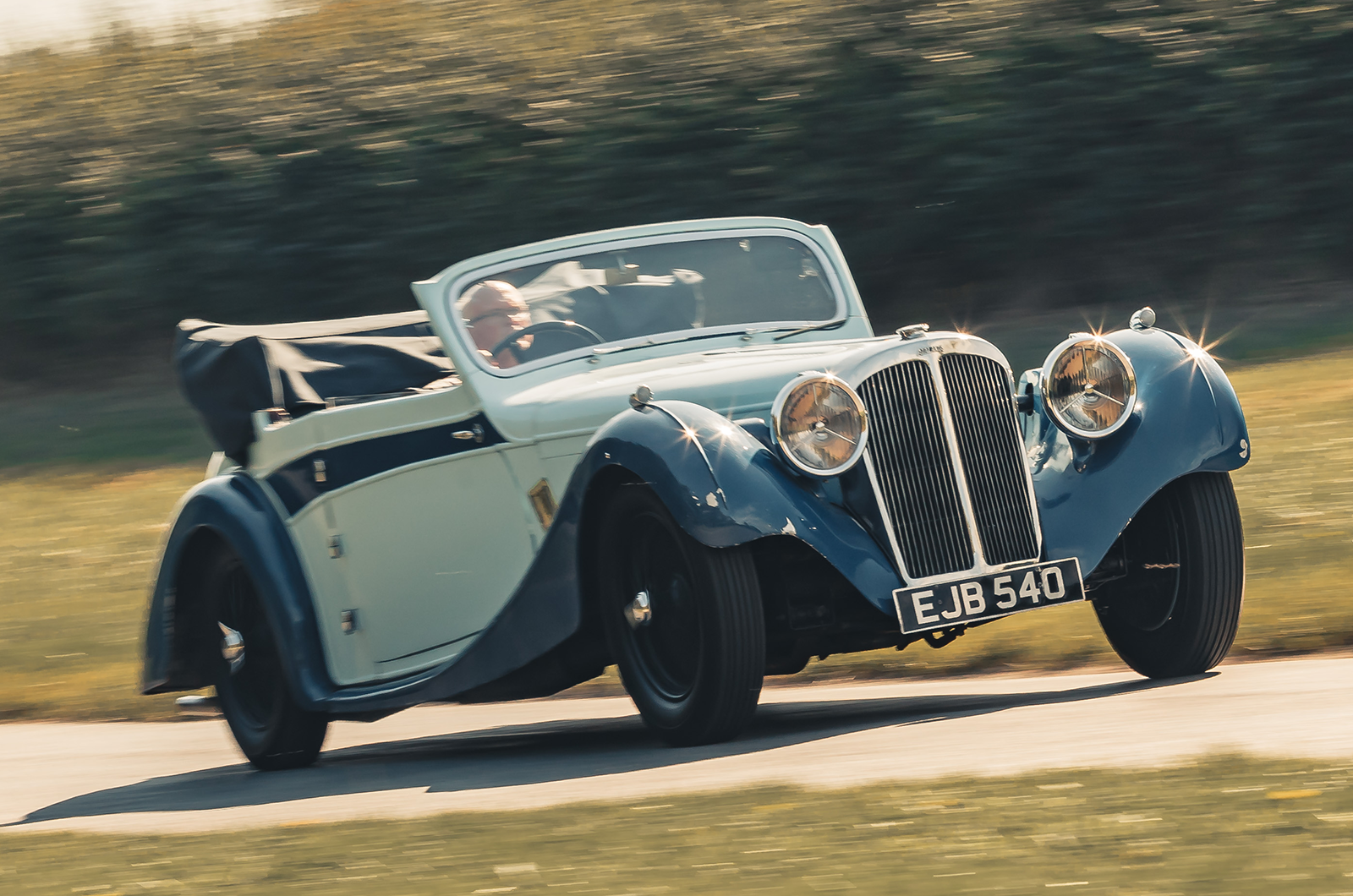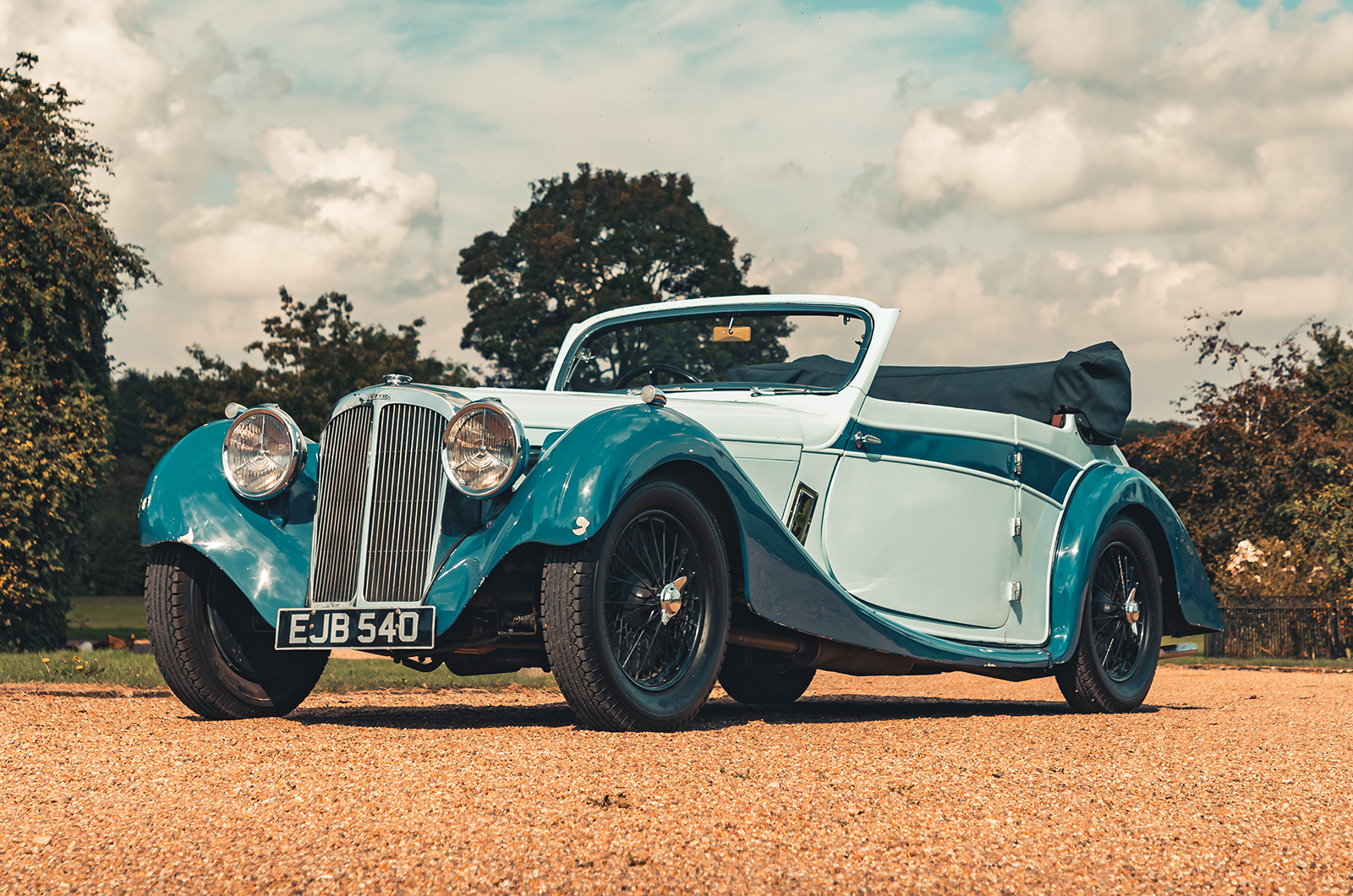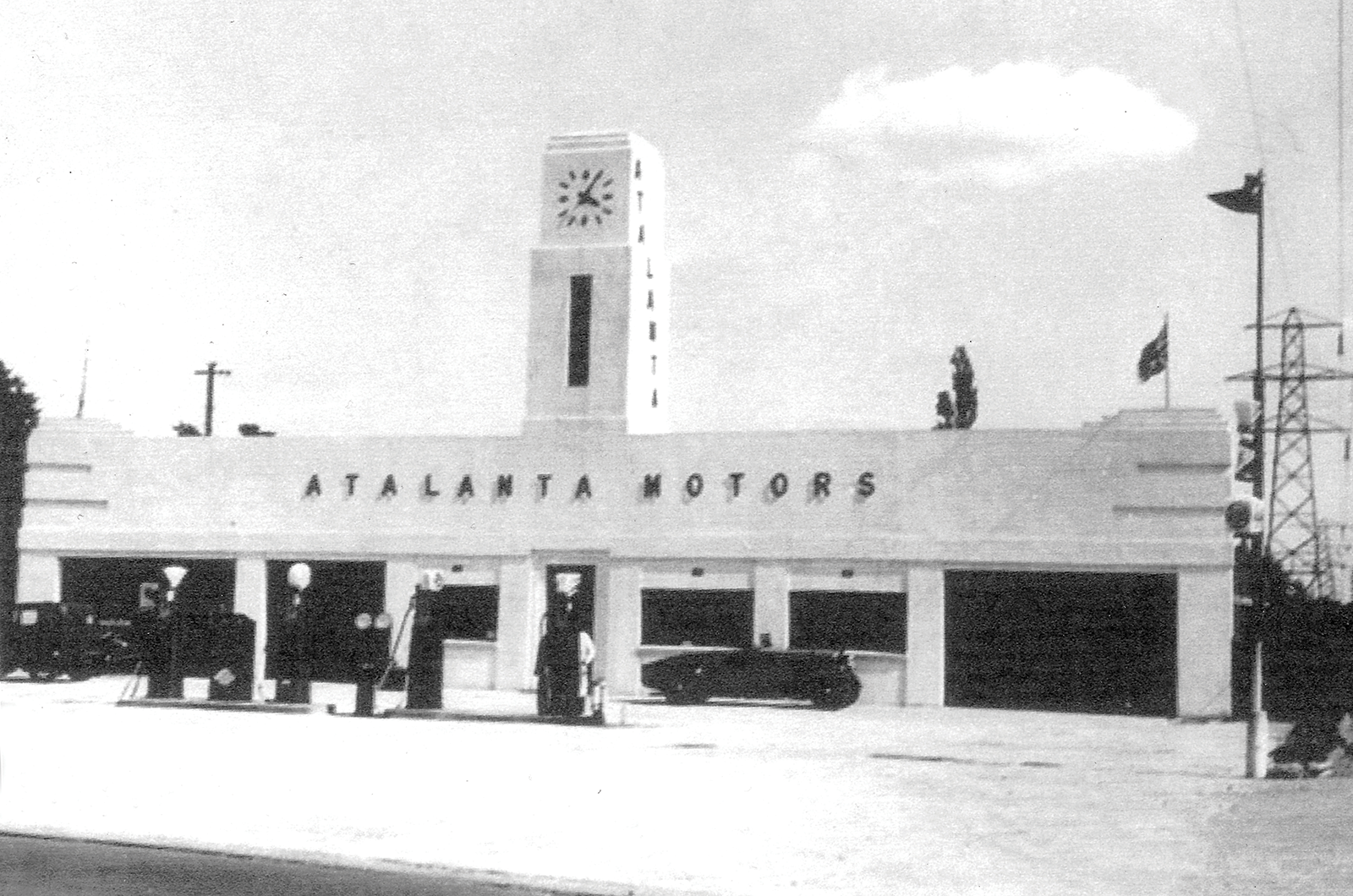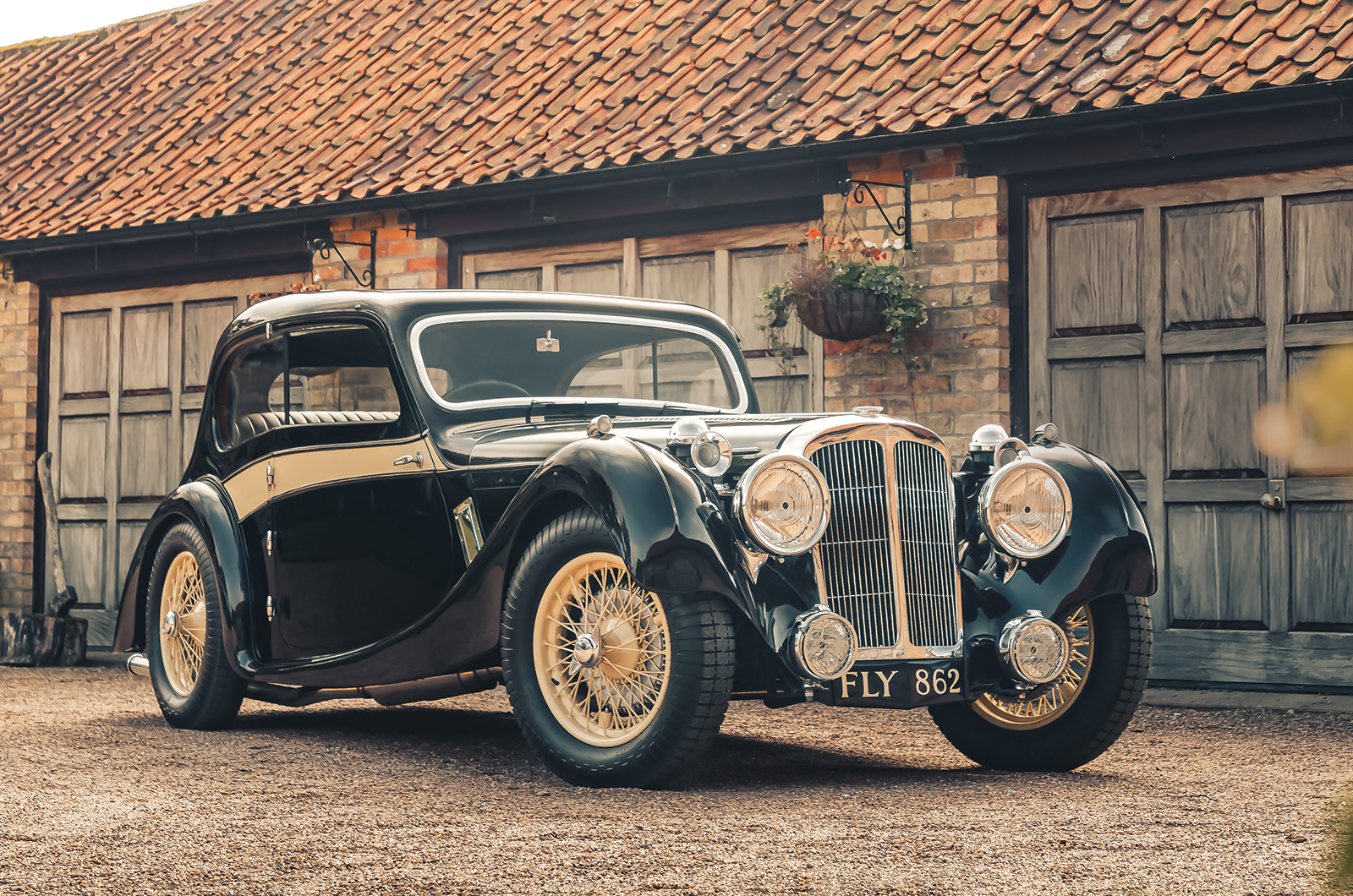Mark also commissioned Dick Shattock, who had bought Atalanta’s parts stock and was responsible for the brand’s rebirth (see below), to fit new suspension, inboard Alfin rear drum brakes and finned front drums.
He then campaigned the car – sporting more modern Lucas lights – at various events, including the Vintage Sports-Car Club’s Pomeroy Trophy.
FLY was sold at auction in 1970 to Stanley Macadie from Kent, but its clutch failed while being driven home.
Macadie kept the car until his death nearly 40 years later, but the Atalanta remained unrepaired and was never driven again.
More work is still required on this Atalanta V12’s gearing and brakes
Fortunately, a saviour was at hand.
In 2010, the Ward family took on FLY and reunited it with a correct (if not its original) Lincoln-Zephyr V12.
The car underwent a full restoration and, while there have been period-appropriate enhancements – additional coachlines to its body, a larger-bore exhaust and Atalanta logos on the wheels’ chrome spinners are the most obvious – the overall result is stunning.
From the outside, this Atalanta has a decidedly sporting stance and, after opening the vault-like, rear-hinged driver’s door, the impression is maintained as you settle into a surprisingly firm and narrow seat, with your legs stretched out to reach the floor-mounted pedals.
The Atalanta’s tall gearing demands significant clutch slip from the off
Cabin detailing is exquisite, from the large, gently flexing four-spoke steering wheel to the chrome-plated steering column and two cream-faced main dials set in a richly veneered dash.
The Deco-style trim is not original, but sympathetic to what may have existed in ’39.
The view through the hinged front ’screen, down the majestically long bonnet to the sculpted wing-tops and the upper domes of the lights, just needs the addition of a long gravel drive leading to a stately country pile to complete the picture.
The Atalanta V12 has a dog-leg three-speed gearbox
A loud woofle greets you on start-up, and engaging first in the dog-leg three-speed ’box is easy enough.
Insanely tall gearing (a change of diff ratio is on the cards) means that the clutch must be slipped initially, and it isn’t until about 35mph that engaging second feels comfortable.
FLY’s keeper acknowledges that more set-up work is required in these early days after its 12-year restoration.
This perhaps explains why, from the off, the steering feels ponderous and vague, and the ride quality – especially at the rear – is quite severe and not in keeping with expectations of how this car should go down the road.
This Atalanta V12 drophead coupé wears its time-worn patina well
Equally, its braking performance – feel, linearity and bite – is somewhat removed from what it should be.
It’s just as well that the V12 drophead coupé, chassis L1010, also joins us today.
No pre-war history exists for this car, but from 1946, when it was re-registered with its current number, EJB 540, it went through five owners, before being exported to Texas in 1998.
It was then repatriated in 2012 by the Ward family and, while some mechanical and electrical work has taken place, it retains a lovely patina to its coachwork and cabin.
Little is known about this Atalanta V12 drophead coupé’s early days
Crucially, EJB is a deal more representative of how an Atalanta should drive and how, hopefully, FLY will one day perform.
Roof down, the Lincoln-Zephyr’s deeply warbling exhaust note is pleasantly at odds with being at the wheel of a pre-war British car.
Gearing is shorter and, combined with a slicker shift and the more satisfying action of a top-mounted throttle (clutch and brake are still from the floor), EJB is instantly more biddable. Fast, too.
The Atalanta V12 drophead coupé has a sporting stance
Even after brisk acceleration to 60mph, mid-range performance way beyond that speed has a responsiveness that validates Beaumont-Thomas’ plea for the American motor to be installed.
There’s plenty of steering play off-centre, but the system is fairly light, more alert and confidence-inspiring in this car.
Curiously, the ride is vastly improved, too; perhaps the outboard rear drums work better to dampen gnarled road surfaces, compared to FLY’s inboard items.
Either way, it’s potent and engaging, and must have captured the hearts of those lucky enough to own one back in the day.
Had Atalanta continued along the same trajectory post-war, it may even have filled the empty shoes left by Bugatti.
Images: Max Edleston
Thanks to: Alister Ward; Julian Brown Classic Car Commissions, where both Atalantas are for sale; Saul Stevens
Atalanta: the post-war years
Atalanta’s original factory in Staines, where just 26 cars were built before WW2
In 1944, Richard ‘Dick’ Gaylard Shattock built the first version of his own Special for competition, using a pre-war Atalanta chassis powered by a supercharged, 16v Brooke Marine engine.
In 1949, Shattock bought Atalanta’s remaining stock of parts to provide an aftersales service for owners of the company’s pre-war cars, Atalanta having by then moved into pump production.
He also acquired the rights to the ‘Atalanta’ name, prefixed with his initials, ‘RGS’, to define the company from the pump manufacturer.
Shattock produced between nine and 12 fully built RGS Atalantas from his Brookside Garage works in Berkshire, but the company had more success producing its ‘Kit of Parts’ for amateur car builders.
From 1952, after glassfibre emerged as a wonder material, RGS Atalanta also made and sold its own bodies across the UK, Europe and the USA.
Some car makers, including TVR and Buckler, even offered Atalanta body options for customers.
In 2012, 50 years after RGS Atalanta had sold its Brookside works, Atalanta enthusiast Martyn Corfield revived the historic name with the introduction of a reverse-engineered car, based on the pre-war V12 model with an open two-seater body and power from a 2.5-litre, four-cylinder Ford engine.
Adhering to modern IVA regulations, the new handbuilt Atalanta aims to retain the good looks and spirit of the original.
Factfile
Atalanta V12
- Sold/number built 1937-’39/26
- Construction steel chassis, with aluminium body over ash frame
- Engine iron-block, alloy-heads, sidevalve-in-block 4379cc V12, single Ford carburettor
- Max power 112bhp @ 3900rpm
- Max torque 180lb ft @ 400-3500rpm
- Transmission three-speed manual, RWD
- Suspension independent, at front by twin trailing arms rear single trailing arms; coil springs f/r
- Steering worm and peg
- Brakes drums, with double-barrelled master cylinder
- Length 14ft 8in (4470mm)
- Width 5ft 5in (1650mm)
- Height n/a
- Wheelbase 10ft (3048mm)
- Weight 2912lb (1321kg)
- Mpg 20
- 0-60mph 12 secs
- Top speed 101mph
- Price new £740
- Price now £225,000*
*Prices correct at date of original publication
Enjoy more of the world’s best classic car content every month when you subscribe to C&SC – get our latest deals here
READ MORE
Lagonda V12 Rapide: WO Bentley’s masterpiece
Derby Bentleys: 90 years of brilliance
Bugatti Type 57 Atalante: tour d’élégance
Simon Hucknall
Simon Hucknall is a senior contributor to Classic & Sports Car
